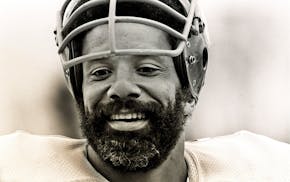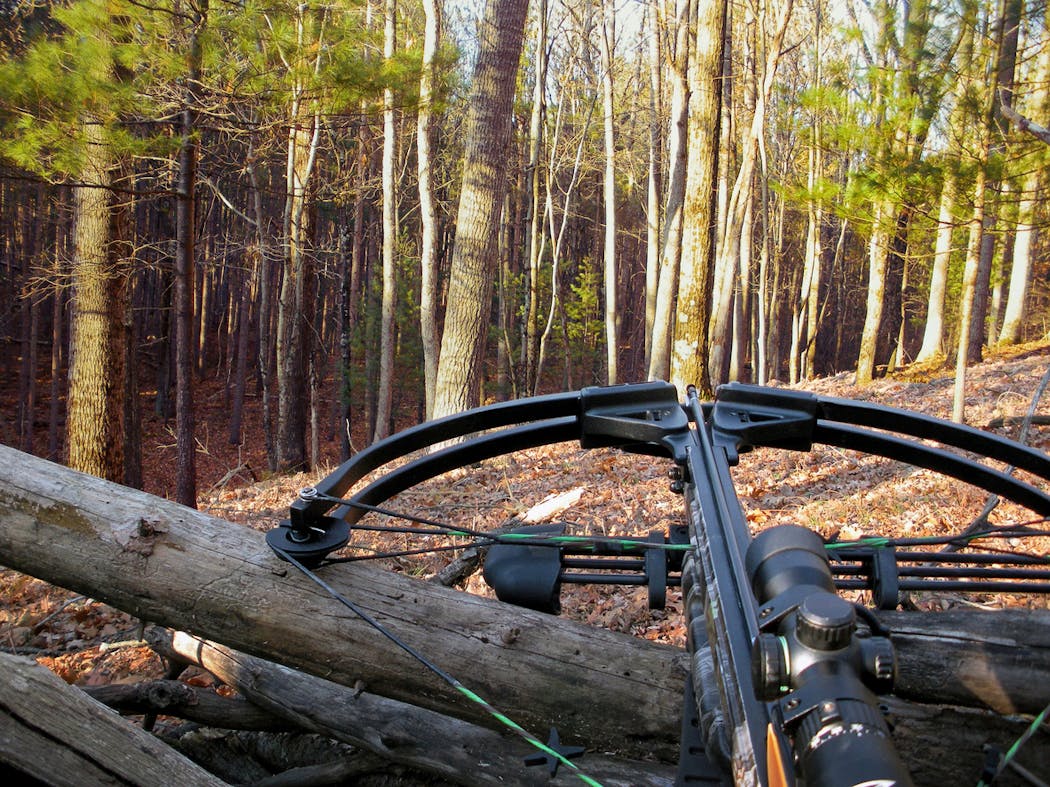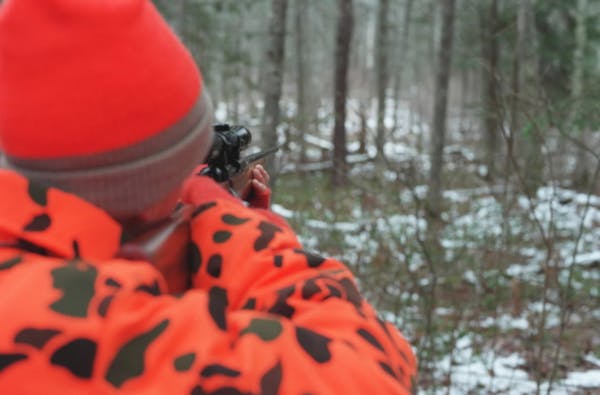The Department of Natural Resources has lowered bag limits in 38 deer hunting permit areas for the 2023 season, a response to the scarcity of whitetails in northern Minnesota.
DNR Big Game Program Leader Barb Keller said deer in many of those areas have suffered back-to-back severe winters and a few of the areas were hit harshly for three consecutive winters.
The agency doesn't have an overall 2023 deer harvest goal, Keller said, but expectations are well below the statewide long-term management goal of harvesting 200,000 whitetails a year.
"It's not appropriate to reach that goal every year,'' Keller said Tuesday. "Sometimes you need populations to recover.''
In parts of central and southern Minnesota, Keller said she would like to see an increase in the deer harvest. To cut into deer abundance in those areas, DNR increased bag limits in 12 deer permit areas. Bag limits are unchanged this year in 80 other areas.
Tuesday's release of permit availability in each of the state's 130 deer permit areas coincided with the first day of 2023 deer license sales. In addition, the DNR released its annual publication of regulations changes. Top among the new rules is one that gives all crossbow users full access to the archery deer season that runs from mid-September until the end of December.
State Sen. Andrew Lang, R-Olivia, said there was bipartisan support in the Legislature this year to drop limitations on crossbow usage. In previous archery deer seasons, crossbows could only be used by physically disabled hunters or hunters older than 60.
"Anything we can do to get more people involved in the outdoors, the better,'' Lang said.
In Minnesota, crossbows were debated for several years. Users of vertical bows argued that the archery season was meant to provide an outlet for a more primitive way of hunting. Lang said today's crossbows can surpass compound bows in performance.
"I don't think it does anything but help the sport,'' he said.
Under the new regulation, successful archery season hunters will be asked by the DNR to specify whether they used a vertical bow or a crossbow. Keller said the survey will help the agency track what's happening afield. In other states that have allowed crossbow use throughout archery season, crossbow harvest gradually overcomes harvest by vertical bows, she said. In addition, Keller said, the DNR anticipates a number of firearms users will gradually shift to hunt deer with crossbows. But the overall harvest of whitetails in the state isn't expected to grow because of those choices, she said. Last year's harvest totaled 172,265 whitetails, down 12.5% from 2020's harvest of 197,000 deer.
In other news from the DNR on Tuesday:
- Outreach section chief Deb Beyer said plans are in the works for choosing a location and an agenda for the 2023 Governor's Deer Hunting Opener. Nov. 4 is this year's opening day of the firearms season, but Beyer would only confirm that the governor's opener is set to take place. In May, the Minnesota Deer Hunters Association's executive board voted not to support the event. The group has been an organizing partner of the celebration since its 2002 inception. As the state's largest organization of deer hunters, it has withdrawn from Gov. Tim Walz over his gun-control politics and his efforts at the Capitol to ban wolf hunting.
- What follows are points of emphasis the DNR is sharing with hunters, explained more fully in the 2023 Hunting and Trapping Regulations. Distribution of the printed booklets is delayed this year until late August, the DNR said, but the guidelines appear online, page by page.
Shotgun zones
Legislators this year appeared poised to eliminate shotgun zones for deer hunting, but the final decision in the conference committee was to stick with the status quo. Therefore, the new rulebook summarizes shotgun and rifle usage as: "In the southern and western portion of the state, the only legal firearms for deer are shotguns using slugs, muzzleloaders, and handguns legal for big game.''
Chronic wasting disease (CWD)
DNR Wildlife Health Supervisor Erik Hildebrand said there are 10 areas of focus this year where CWD testing of hunter-harvested deer will be mandatory on opening weekend. Six of those zones are in areas where there's been a confirmed, positive CWD test result. Testing is precautionary in the other four zones, including an area in northwestern Minnesota where wild elk roam. Keller said the DNR wants to make sure the CWD risk for deer and elk is low in that area before deciding to go along with a plan by the Fond du Lac Band of Lake Superior Chippewa to relocate members of the northwest herd to a wild area in northeastern Minnesota.
DNR also is expanding its CWD testing alternatives to give anyone in the state an opportunity for free screening. One example is a doubling of mail-in kits from 5,000 to 10,000 units. The self-service kits are available from the DNR starting this week. DNR also expanded its partnership with taxidermists across the state to do tissue sampling for hunters who desire a test.
Hunting blinds
A new safety regulation requires deer hunters who set up fabric-covered ground blinds on public land to display blaze orange material on the blind's exterior, visible from all directions. It doesn't apply to blinds on private land.
Nontoxic ammo
The rulebook includes a change ordered by DNR Commissioner Sarah Strommen banning lead ammunition on 56 state-owned Scientific and Natural Areas (SNAs) where hunting is allowed. The ban, criticized heavily by the chief executive officer of Federal Ammunition in Anoka, also affects special hunts in some state parks. Partially exempted from the regulation are youth hunters who qualify for special hunts in shotgun zones. But if they have success using lead ammo, they are required to remove the gut pile in addition to their deer. The exemption is due to shortages of certain nontoxic ammo types, the DNR has said. Removing gut piles is meant to protect raptors and other wildlife scavengers from possible lead toxicity.
Youth tags
Youth deer hunters are no longer allowed to share their tag with anyone else if they are party hunting. Youth hunters must use their own tag on their own deer.
Portable stands
In northwestern Minnesota, hunters will be allowed to keep tree stands in place on public land overnight, as long as the hunter's identity is prominently displayed on the equipment. A successful pilot project lapsed last year, but the new regulations bring the grace period back for good.
Bears, birds
There are virtually no changes in rules about the hunting of bears or upland game birds.
What is the 'House settlement,' and what does it mean for the Gophers and NCAA?
A $2.8 billion settlement will change college sports forever. Here's how

Souhan: Anxiety and depression in the NFL helped inspire Lindsey Young's children's book

Reusse: Country boy Jim Marshall never lost his lust for life



